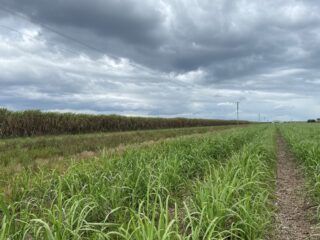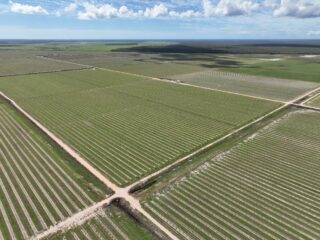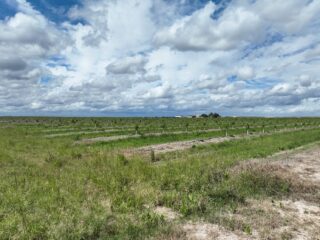Thought leadership
- Date 04 September 2025
- Words by Maria Gonzalez Senac
- Reading time 3 mins
Celebrating World Macadamia Day
On September 4th, South African and Australian growers celebrate World Macadamia Day, recognising one of nature’s most nutritious nuts. In this article, you will read how macadamias are gaining global attention not only for their health benefits but also as a sustainable investment. CAM’s Project Paradise highlights how regenerative orchards can restore land, support communities and deliver resilient returns.
About The Unknown Nut: Macadamias
On September 4th, South African and Australian macadamia growers celebrate World Macadamia Day, taking an opportunity to celebrate one of nature’s most nutritious nuts.
Native to northeastern Australia, where they evolved in the rainforests over 60 million years ago, macadamias are a healthy and nutritious nut, that is quickly gaining popularity globally as an alternative to other nuts[1]. While the macadamia market is smaller than those of other nuts – global almond production amounted to 1.9 million metric tons (MT) in 2023, versus 0.3 million MT of global macadamia production -; it is a fast-growing one.
Global macadamia production doubled between 2010 and 2020 and is expected to grow at an annual rate of 10% during the next ten years[2]. The key macadamia growing regions are South Africa (27% of global production), China (23%) and Australia (17%)[3]. The main drivers of macadamia demand growth are its increasing reputation as a healthy snack and the rise of plant-based diets, with Asian markets as a key source of growth.
Macadamia As An Investment Opportunity
As institutional capital pivots toward natural capital investing in an effort to mitigate and adapt to climate change while obtaining long-term sustainable returns, macadamias, like many other perennial crops, are gaining recognition as an attractive scalable investment that meets sustainability targets.
We, at Climate Asset Management (CAM), in our opinion, consider macadamias an attractive investment for many reasons, but three key ones are:
- The strong underlying market fundamentals and the high value of the product: as mentioned before, the macadamia market is growing rapidly driven by growing demand for healthy snacks and plant-based diets. In addition, macadamias are viewed as premium nuts, with price differentials based on product quality.
- The opportunity to align with regenerative agriculture practices such as, for example, maintaining interrow cover crops, which not only protects the soil from erosion and contributes to nutrient retention, but also offers advantages at the time of harvest by preventing run-off and dirt accumulation; the use of compost from thinning to increase soil health; or an efficient water management.
- Long-lived assets: macadamia trees generally live for 40-60 years, with some living up to a century. This increases the amount of carbon they lock in, both through above-ground biomass and the compost from organic matter that boosts soil carbon[1], and also offers a stable long-term investment with recurring cash yield.
Project Paradise: CAM’s First Macadamia Project
In 2023, CAM’s Natural Capital Fund (NCF I) acquired a 1,800 hectares[5] sugarcane farm in Queensland (Australia) with the aim of converting it into a regeneratively managed macadamia orchard. The project is expected to start production in 2026, with c. 9,000 MT of in-shell macadamia production at the point of maturity in 2033[6].
“The transaction is highly aligned with NCF land conversion strategy and positive change of land use, transforming degraded intensive annual crop production to sustainably managed high value native macadamia orchard.” – Parisa Rahnama, Investments Manager, CAM.



Some of the key highlights of the project are:
- Collaboration with local partners: CAM has partnered with Macadamia Farm Management (MFM) for the development and operation of the project. CAM and MFM work closely together in making the strategic project decisions. MFM, a leading macadamia orchard developer in Australia, bring the crop technical expertise and through them the project will generate local employment in the Bundaberg region.
- Regenerative management: from the onset, interrow cover cropping has been established to enhance biodiversity and avoid erosion. MFM are also implementing integrated pest management to minimize chemical input use while maintaining orchard health, and compost application to increase soil organic carbon.
“The interrow has been sown to 13 different species. This will create further biodiversity across the orchard. With the land profile being so flat, we have had to focus on drainage. This will allow for timely runoff, so as to not affect the growth of the trees.” – Scott Allcot, Macadamia Farm Management
- Water security: in addition to water allocation accessed through boreholes and water rights acquired from Sunwater, MFM have maximized the orchard’s water availability by maximizing water run-off recovery, which hedges the project against potential future water shortages during drought periods.
- Restoration project: the project includes the creation of a biodiversity corridor of over 100 hectares connecting the two adjacent national parks (Burrum and Bingera). The restoration project has been designed with local partners, including of WYLD Projects Indigenous Corporation, a community-based indigenous corporation specialized in improving opportunities for the indigenous youth.
“ My role is to create a cultural safe space and build continuity with our young ones knowing how we can be sustainable in this country” – Bruce Wire, WYLD projects
- Carbon sequestration: the project aims to achieve net zero for Scope 1 and 2 emissions by 2030 and generate additional carbon removal units through increasing above and below ground biomass. In addition, the restoration area has been registered under Australia’s Australia’s Carbon Credit Unit (“ACCU”) scheme, CAM is also exploring the registration of the productive area under voluntary carbon methodologies to monetize the ecosystem services of the transformation to a regenerative orchard.
In conclusion, Macadamias may still occupy a smaller share of the global nut market, but their potential is significant. With rising consumer demand for healthy, plant-based foods and increasing interest in sustainable agriculture, macadamias offer a compelling case for long-term investment. Their premium value, alignment with regenerative practices, and ability to sequester carbon make them a powerful tool in the transition to climate-resilient food systems. CAM’s Project Paradise demonstrates how natural capital investments can restore ecosystems, support local communities, and deliver enduring returns.
On this World Macadamia Day, we invite investors, policymakers, and sustainability leaders to look beyond the nut—and see the orchard as an opportunity.
Join CAM in scaling natural capital solutions that regenerate land, empower people, and deliver resilient returns.
Sources:
- History and industry – Australian Macadamias.
- WMO Resources (2025). WMO – World Macadamia Organisation.
- WMO Resources (2025). WMO – World Macadamia Organisation.
- WMO Resources (2025). WMO – World Macadamia Organisation.
- Climate Asset Management completes c.1,800Ha Macadamia project acquisition in Queensland – Climate Asset Management.
- Assuming yield of 6,100-6,660kg/ha

